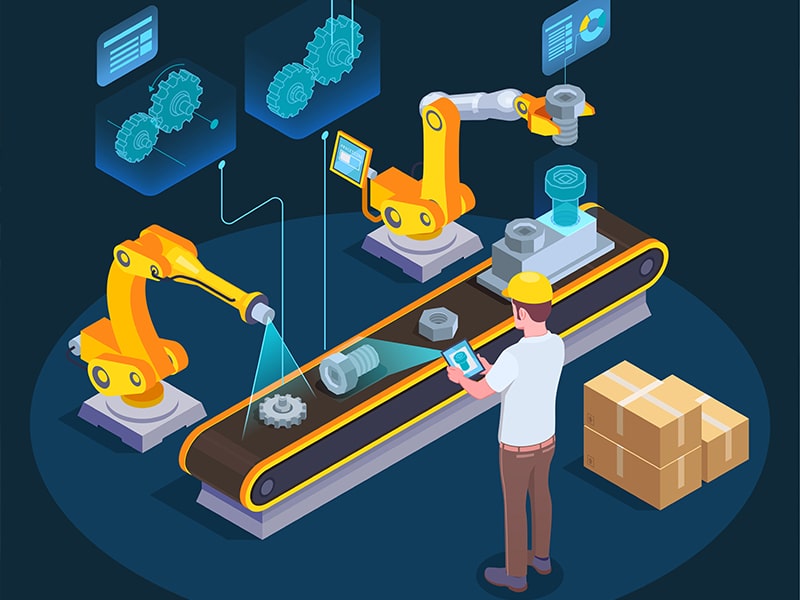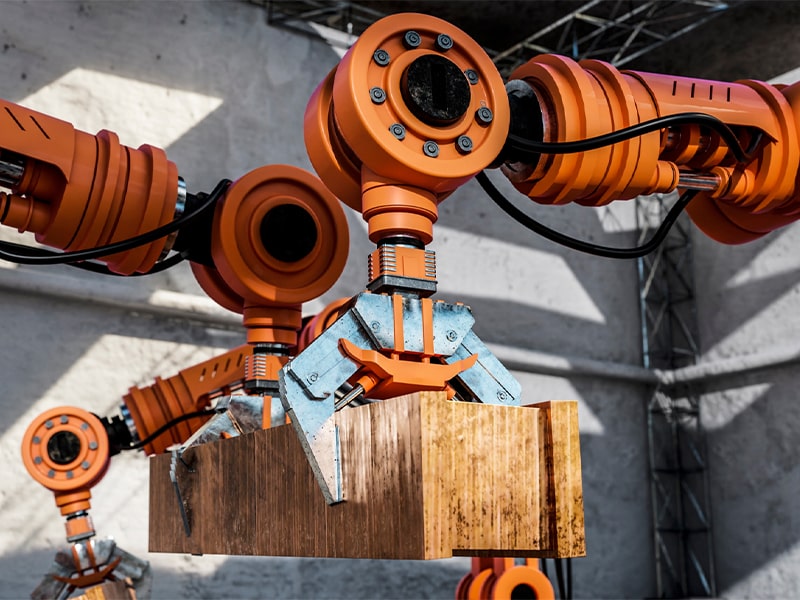The main difference between automation and mechanization
Increasing productivity in industries is possible thanks to industrial automation. With the control system and industrial automation, technology will progress with strength. And there is no end to the innovations of this science. In this article, we will examine the advantages of industrial automation in a completely specialized and scientific way.
Get to know automation better
In simple words, automation presents the information that exists in different components. in an organization. in an integrated and easy way in the form of a platform in the form of software. This work is done to provide information, statistics of the organization and instructions in such a way that their exchange is correct within the organization.
“Robotization” is another name for automation. This means that in order to direct and control industrial machines and production processes, control tools such as computers will be used. In fact, it can be said that this work is aimed at reducing the need for manpower. which uses electronic, mechanical, and computer control systems.
Mechanization or automation?
When the work of an organization is done by human forces with the help of tools. and mechanized devices (to do the work better), we call it mechanization. Industrial robots are the most well-known part of mechanization.
But automation can be considered a step beyond mechanization. Because automation, unlike mechanization, does not need human power.and has removed the role of humans in the process. and has created a substitute for human forces, and smart devices are one of these replaced members. In automation, computers and machines think and make decisions instead of humans.

Why do we use automation?
The use of automation has many features and advantages over traditional methods, of which we will examine the most important ones.
Increase in productivity
Automation is used in production lines to increase the production rate with high quality and accuracy (in fact, it can be said. to reduce the time spent per production of each product).
The cost of production is reduced
reducing the costs of producing goods; Production time is reduced by using automation. In addition to reducing the production time of each product, the need for manpower is also reduced during the process.
High quality in product production
Automation minimizes the possibility of human errors. In this way, in various stages from design to construction, using the function of automation equipment, the quality of work increases and the inspection is done correctly.
Increasing security through automation
One of the main advantages and reasons for the existence of industrial automation in the production of goods is to replace industrial machines instead of humans in dangerous environments, and thus safety training in work environments has increased.
The main advantages of industrial automation:
The use of industrial automation offers many advantages and benefits that can help improve efficiency and quality in various industries. Below, we explain some of these benefits:
- Increased productivity and production:With the automation of industrial processes, it is possible to perform tasks with high precision and without the need for rest, which ensures improved efficiency and production.
- Cost reduction: Using automatic methods leads to a reduction in labor and, as a result, costs. Also, reducing errors and waste also reduces production costs.
- Quality improvement: accurate control of processes and the use of automatic systems improve the quality of products. This means reducing the number of defective products and increasing customer satisfaction.
- Greater flexibility: Automated systems are capable of rapid changes, allowing processes to be adjusted and adjusted to meet changing market demands.
- Greater security: Industrial automation can help increase security in workplaces, including safeguarding sensitive information, controlling access, and executing dangerous activities with greater precision.
- Better scheduling and inventory management: Automatic systems can manage production scheduling in the best possible way and use raw material inventory in the best possible way.
- Better monitoring and control: Industrial automation allows managers to monitor and control more remotely, which improves strategic decision-making.
- Environment and sustainability: The use of automation can lead to optimization of energy and material consumption, which is not only beneficial for business but also helps to preserve the environment.
These are just a few of the benefits of using industrial automation. Depending on the type of industry and your specific needs, there may be other benefits.

Examples of industrial automation systems
At the beginning of the work, you must specify the process you want; Then determine the type of system among hard, fixed, programmable, soft or flexible automation. Let’s read some examples of these systems together:
- Process control systems: These systems are used to control and manage production processes, including controlling temperature, pressure, flow, level, etc. Process control systems can consist of PLC (programmable logic controller), DCS (distributed control system) or SCADA (supervisory, control and data connectivity).
- Collaborative robots: Robots are used in production lines to perform mechanical and repetitive tasks. Collaborative robots work alongside humans and are useful in processes that require high sensitivity and precision.
- Automated warehousing and logistics systems: These systems are used to manage materials and products in warehouses and transfer them automatically. This includes AS/RS (Automated Warehouse Storage and Retrieval) systems and intelligent material handling systems.
- Manufacturing and production automation systems: These systems are used to automate the manufacturing and production processes of products. This includes CNC (Computer Numerical Control) systems, production tracking and inventory management, and CAM (Assisted Manufacturing Management) systems.
- Environmental automation systems: These systems are used to control and manage the consumption of energy, water and other resources in industrial processes. This includes energy consumption monitoring systems, recycling systems and pollutant control systems
What are the control components in industrial automation systems?
In order for industrial automation to reach its goals in doing work, it uses equipment frequently. These equipments include: actuators, gauges and controllers, which we describe briefly.
1..Incentives
The actuators will take the output signals as the control part and act according to the specific proportion of the signals Control valves .can be mentioned among the majority of these output devices. which control the measured parameters with their good performance.
2. Gauges
These devices are known as the eyes of control systems. which can show the generated status to the controller. and as a result send the correct command to control the process and reach the setting point to the actuator.
Measuring devices have three components:
sensor
This part is sensitive to all physical parameters (motion, light, magnetism, sound, etc.) and when it is stimulated, it reacts without the need of external energy.
Transducer
When the sensor delivers the measured parameters to the transducer, the measured parameter is converted into a signal that can be understood by the controller. It can be said that the transducer converts energy states into each other with the help of external energy.
The output signal of the transducer is converted into a signal that can be transmitted by the transmitter. The famous transmitter standards are 4 to 20 mA and 0 to 10 volts.
3. Controller
Driving and maintaining one or more processes to the desired state is done by the second part of the instrument, i.e. the control part. The basic objectives in this department are quantitative, qualitative control, environmental protection and safety.
